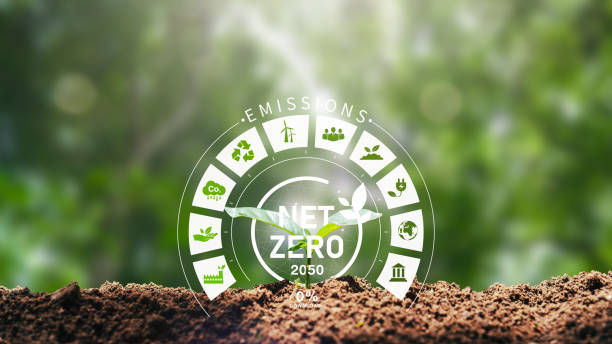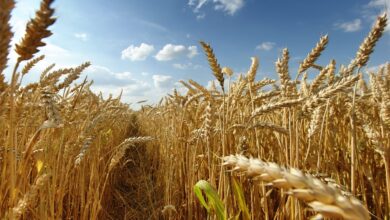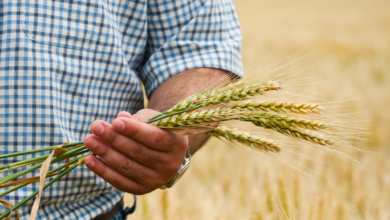Planting a Greener Future: Understanding the Benefits of Carbon Neutral Farming
CARBON NEUTRAL FARMING

In recent years, the concept of carbon neutral farming has gained significant attention in the agricultural industry. As concerns about climate change and environmental sustainability continue to grow, more and more farmers are looking for ways to reduce their carbon footprint and contribute to a greener future. But what exactly is carbon neutral farming and why is it important? In this blog post, we will explore the benefits of carbon neutral farming and how it can help us create a more sustainable and environmentally friendly food system.
Decoding the Concept: What is Carbon Neutral Farming?
Carbon neutral farming is an innovative approach to agricultural practices that aims to reduce the carbon emissions produced by farming activities. The concept revolves around the idea of balancing the amount of carbon released into the atmosphere with an equal amount that is removed or offset. This is achieved through various strategies such as implementing renewable energy sources, practicing sustainable land management techniques, and utilizing carbon sequestration methods.
By reducing carbon emissions and promoting carbon removal, carbon neutral farming helps combat climate change and its detrimental effects. It contributes to a more sustainable and resilient food system by minimizing the environmental impact of agricultural practices. Additionally, carbon neutral farming can lead to improved soil health, increased biodiversity, and enhanced water quality.
The goal of carbon neutral farming is to create a harmonious balance between food production and environmental preservation. It offers an opportunity for farmers to play a crucial role in addressing climate change and fostering a greener future for generations to come.

Why Go Green: The Urgent Need for Carbon Neutral Farming
As the impacts of climate change become more apparent and the need for sustainable solutions becomes increasingly urgent, carbon neutral farming has emerged as a critical strategy. The urgency stems from the fact that conventional farming practices contribute significantly to greenhouse gas emissions, which exacerbate climate change. From the use of synthetic fertilizers to the methane produced by livestock, agriculture is a major source of carbon emissions.
- By embracing carbon neutral farming, we can reduce these emissions and work towards a more sustainable future. This approach is crucial for mitigating climate change and preserving the planet for future generations. Not only does carbon neutral farming help to combat the devastating effects of global warming, but it also enhances the resilience and longevity of our food system.
The urgency for carbon neutral farming lies in our responsibility to protect the environment, ensure food security, and create a sustainable future for all. By adopting carbon neutral practices, farmers can play a vital role in addressing climate change and preserving the Earth’s resources for generations to come.

Planting Change: Key Principles and Methods of Carbon Neutral Farming
To achieve carbon neutral farming, several key principles and methods are essential. First and foremost, implementing renewable energy sources is crucial. Switching to solar power or wind turbines can significantly reduce the carbon emissions associated with energy consumption on farms.
Another key principle is sustainable land management techniques. This includes practices such as rotational grazing, cover cropping, and conservation tillage. These methods help improve soil health, enhance water retention, and reduce the need for synthetic fertilizers, which are major contributors to greenhouse gas emissions.
Carbon sequestration methods are also vital in carbon neutral farming. This involves capturing and storing carbon in the soil, plants, and trees. Practices like agroforestry, where trees are integrated into agricultural landscapes, can effectively sequester carbon while providing additional benefits such as shade and windbreaks.
By combining these principles and methods, farmers can make significant strides towards achieving carbon neutrality. These practices not only reduce carbon emissions but also improve overall sustainability, biodiversity, and resilience in the food system. Planting change through carbon neutral farming is essential for creating a greener and more sustainable future.

Cultivating Advantages: The Benefits of Carbon Neutral Farming for the Environment and Farmers
Carbon neutral farming offers a range of benefits for both the environment and farmers themselves. Firstly, it helps combat climate change by reducing carbon emissions. By implementing renewable energy sources and sustainable land management techniques, farmers can significantly decrease their carbon footprint and contribute to the global effort in mitigating climate change. This not only protects the environment but also helps preserve the planet for future generations.
Additionally, carbon neutral farming has numerous advantages for farmers. It can improve soil health, leading to better crop yields and increased resilience against pests and diseases. The use of cover crops and conservation tillage practices can enhance water retention and reduce soil erosion, improving the overall productivity of the farm. By sequestering carbon in the soil, plants, and trees, farmers can also create additional income streams through carbon credit programs.
Overall, carbon neutral farming is a win-win solution. It benefits the environment by reducing greenhouse gas emissions and helps farmers build a more sustainable and profitable farming system. By embracing carbon neutral practices, farmers can cultivate a greener future for all.

Leading Examples: Success Stories in Carbon Neutral Farming
The concept of carbon neutral farming has gained momentum in recent years, and there are some inspiring success stories that showcase its potential. One such example is the Cool Farm Tool, a digital platform that allows farmers to measure and manage their greenhouse gas emissions. By using this tool, farmers have been able to identify areas for improvement and implement changes that have led to significant carbon reductions.
Another success story comes from an organic dairy farm in California. Through the implementation of regenerative grazing practices and the use of renewable energy sources, this farm has not only become carbon neutral but has actually become a carbon sink, meaning it sequesters more carbon than it emits. This is a remarkable achievement that demonstrates the transformative power of carbon neutral farming.
These success stories highlight the feasibility and benefits of carbon neutral farming. They show that by implementing sustainable practices and utilizing innovative tools, farmers can make a positive impact on the environment and create a more sustainable and resilient food system. These examples serve as inspiration for others in the industry to adopt carbon neutral practices and contribute to a greener future.

Seeding the Future: How to Support and Encourage Carbon Neutral Practices in Farming
Transitioning to carbon neutral farming practices requires support and encouragement from various stakeholders. Government entities can play a crucial role by providing financial incentives, grants, and subsidies to farmers who adopt carbon neutral practices. They can also invest in research and development to explore innovative solutions for reducing emissions in agriculture. Additionally, policymakers can establish regulations and standards that promote carbon neutrality and reward farmers who adhere to them.
Consumers also have a role to play in supporting carbon neutral farming. By making informed choices and purchasing products from farms that prioritize sustainability and carbon neutrality, consumers can create demand for these practices and drive change in the industry.
Collaboration and knowledge sharing are vital for the widespread adoption of carbon neutral farming. Organizations and agricultural associations can facilitate peer-to-peer learning, training programs, and workshops to educate farmers about the benefits and implementation of carbon neutral practices. By fostering a community of support and sharing best practices, the transition to carbon neutral farming can be accelerated.

In conclusion, supporting and encouraging carbon neutral practices in farming requires a collective effort. Through financial incentives, regulations, consumer demand, and knowledge sharing, we can create a future where sustainable and environmentally friendly farming is the norm. Together, we can seed a greener future and ensure the long-term viability of our food system.




Hi there, my name is Cody Griner. I apologize for using your contact form,
but I wasn’t sure who the right person was to speak with in your company.
We have a patented application that creates Local Area pages that rank on
top of Google within weeks, we call it Local Magic. Here is a link to the
product page https://www.mrmarketingres.com/local-magic/ . The product
leverages technology where these pages are managed dynamically by AI and
it is ideal for promoting contractors on Google. Can I share a testimonial
from one of our clients with you? I can also do a short zoom to
illustrate their full case study if you have time for it?
cody@mrmarketingres.com 843-720-7301